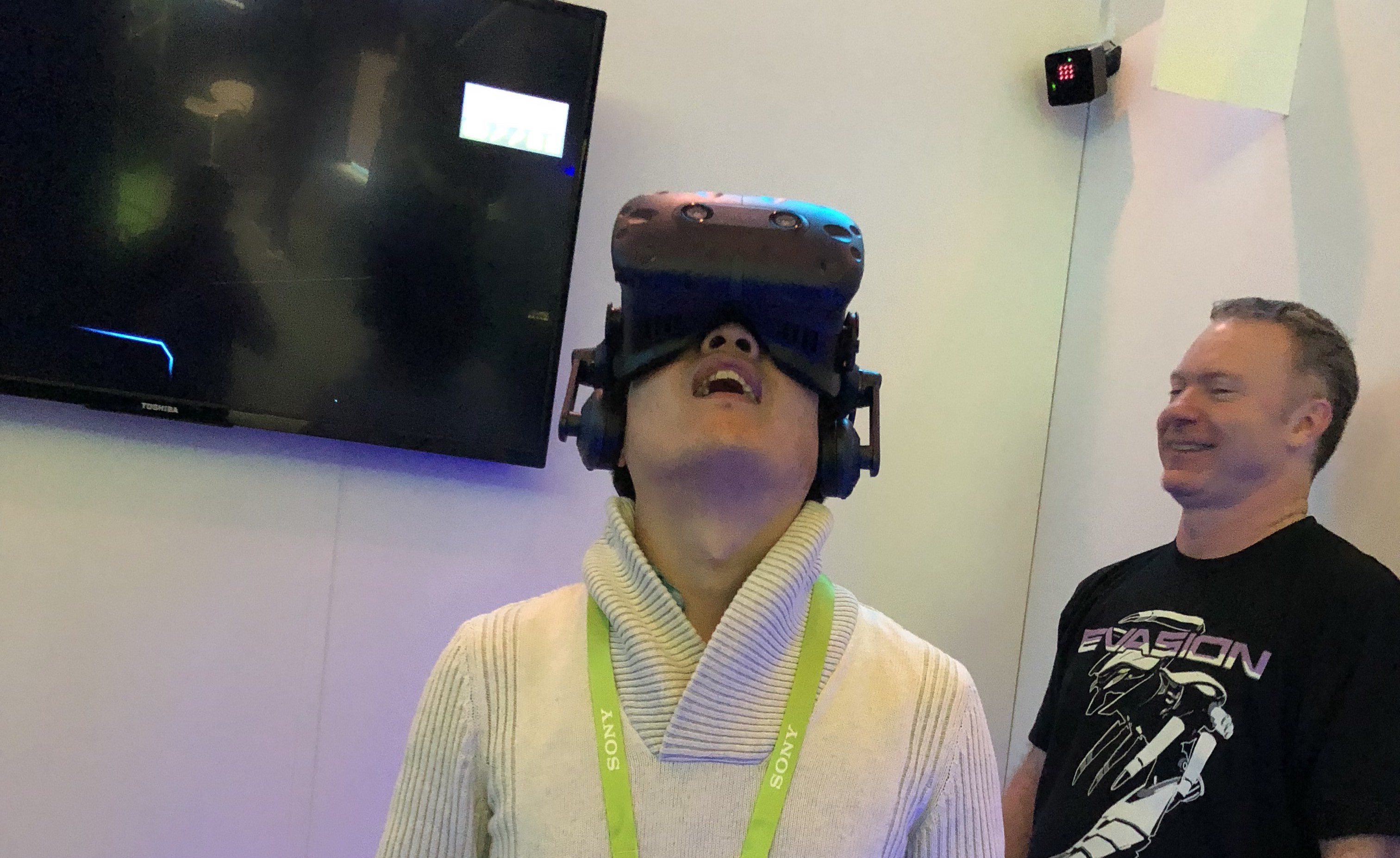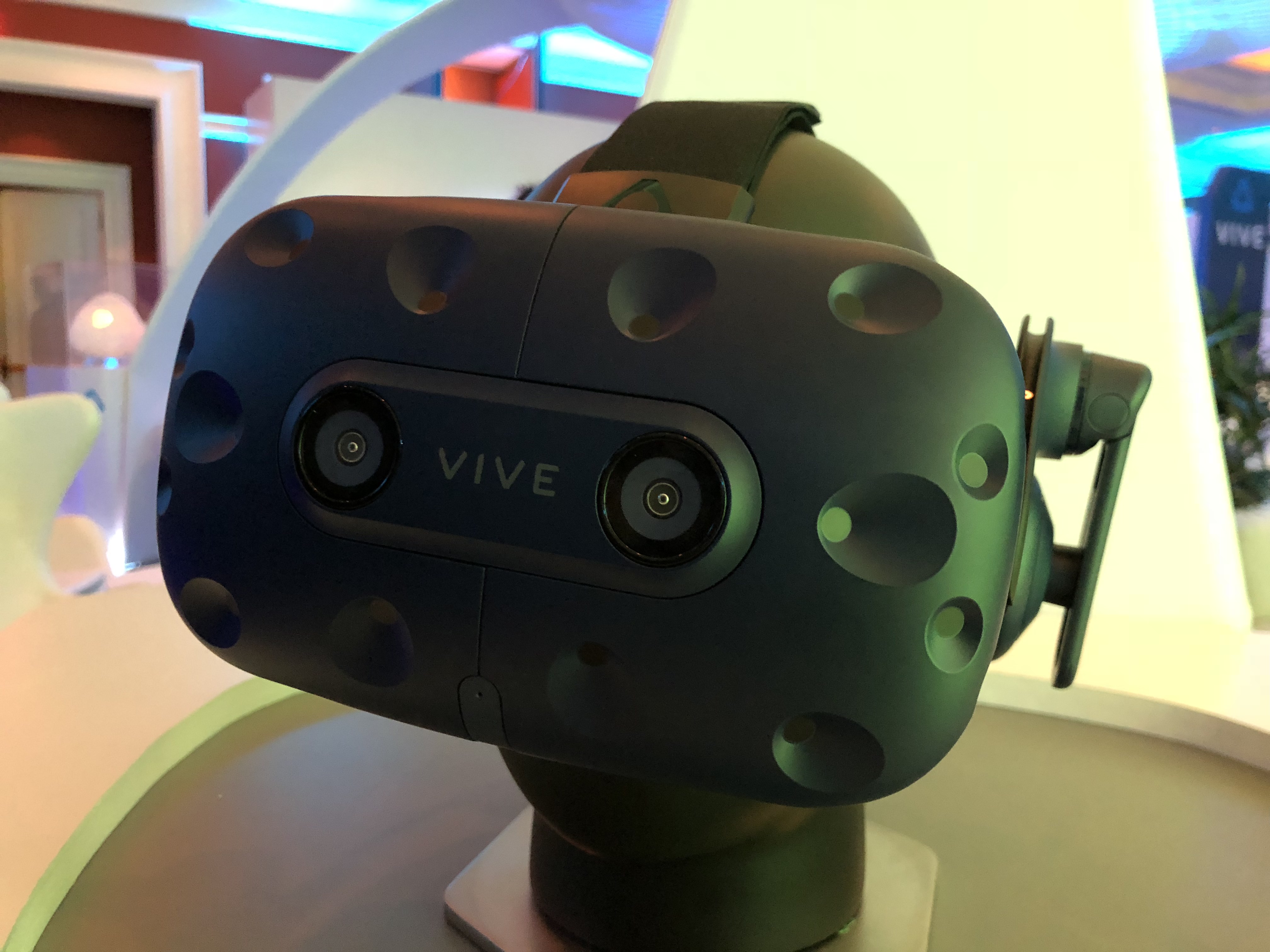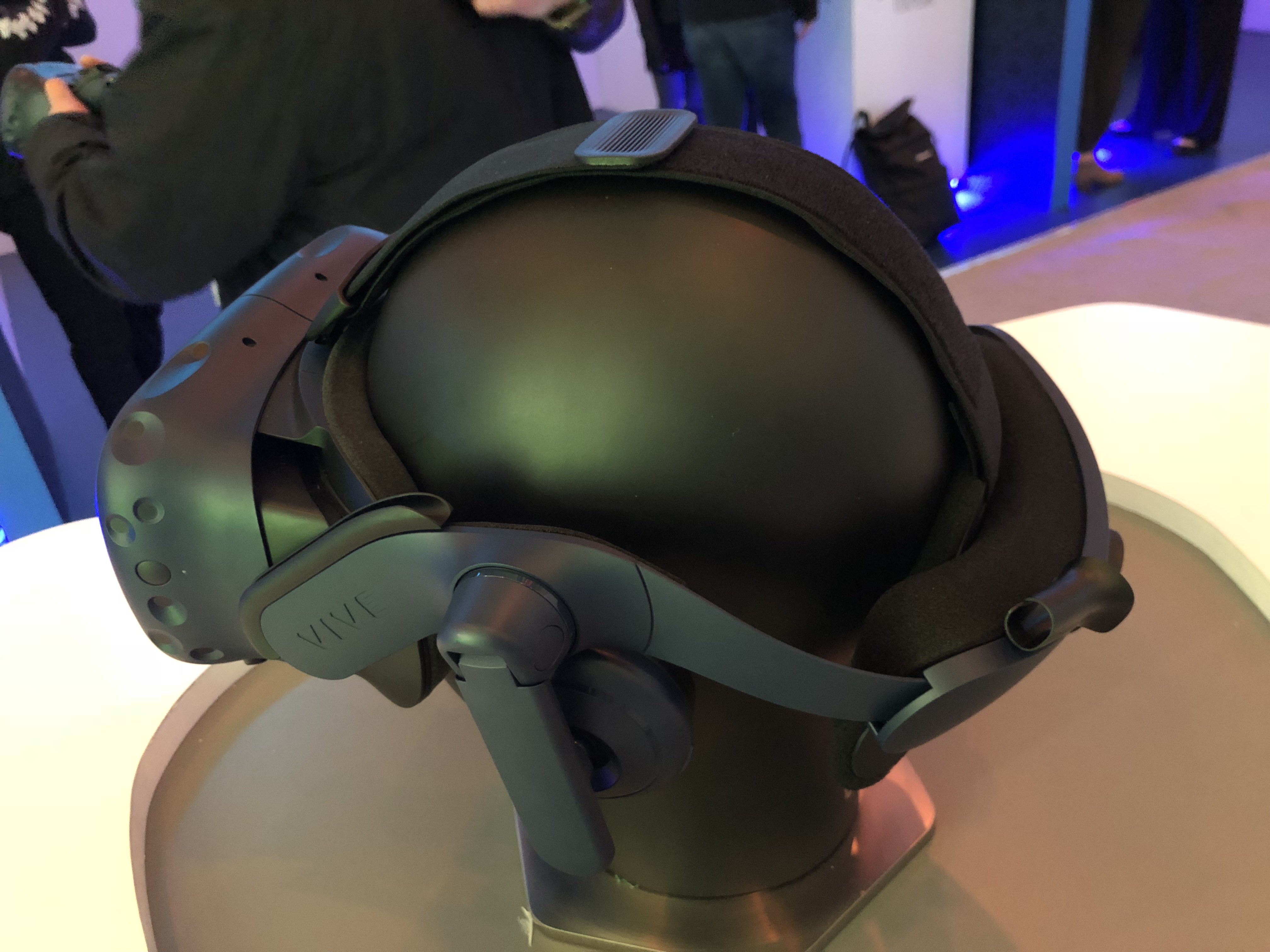The Vive Pro VR headset's new OLED display is a huge improvement
The resolution bump makes for a much clearer picture, and the redesigned headset is also much more comfortable.

The biggest gaming announcement at CES this year is HTC's Vive Pro, a new headset with integrated audio and higher resolution display. I hoped the new headset would bring 4K-per eye to VR, which would've been a huge leap—but that's still a little ways off. Instead, HTC unveiled a 2880x1600 headset, and I wasted no time strapping it to my face.
My first impression was a significant improvement in image quality. You can still see pixels, but the image is far superior to the original Vive and the Oculus Rift. The new OLED display effectively gives you 1440x1600 pixels per eye, making for a much clearer picture.

On paper, the Vive Pro has a 78 percent increase in resolution over the original Vive and Rift. In (virtual) reality, that translates to a truly massive improvement. Effectively, I felt like I was playing in front of a 24 inch 1080p display in real life. The Vive Pro looked good, and immediately sets the product as the number one VR headset to get if you're going to buy one. You just have to wait for HTC to put it on sale.
I played several games, including Evasion by Archiact, which is a first person shooter. Can I still see a screen door, the space between pixels? Barely. The pixels are fine enough now that it doesn't bother me at all. For performance and resolution, the Vive Pro hits the sweet spot in terms of maintaining acceptable frame rates—still 90Hz per eye—and graphics fidelity.

Comfort wise, the Vive Pro has an improved headband and internal headset structure that's more friendly to people wearing glasses. I wear glasses and VR headsets were always a huge problem for me. But the Vive Pro was much easier to put on than the original Vive's elastic straps, and left plenty of room in front of my face where my glasses didn't push up against the Vive Pro's lenses. Overall the head unit still feels slightly front-loaded, but the improved support definitely helps alleviate that issue. It doesn't drag your face downward as badly as the original. I still think the PSVR is the most comfortable headset, but the Vive Pro is a much-appreciated improvement.
Audio is significantly better as well. HTC actually integrated headphones that sound good and feel comfortable, and they're built into the strap system—no more fumbling around for earbuds. The headphones on the Rift are actually amazing sounding, and HTC is now on the same level.
The Vive Pro is really good. The bump in resolution brings it close to being able to replace an actual monitor. I expect that the next high resolution Vive or Rift will be able to replace a monitor completely. To put it bluntly, resolution matters and the Vive Pro makes me want to get back into VR.
Keep up to date with the most important stories and the best deals, as picked by the PC Gamer team.
What I don't know is when exactly you'll be able to buy a Vive Pro, but HTC told me "end of Q1." Price is still up in the air. The existing Vive currently costs $600, and the deluxe audio strap—similar to the one integrated into the new Vive Pro—adds another $100 on top of that. $800 or more for the Vive Pro seems like a safe bet.


